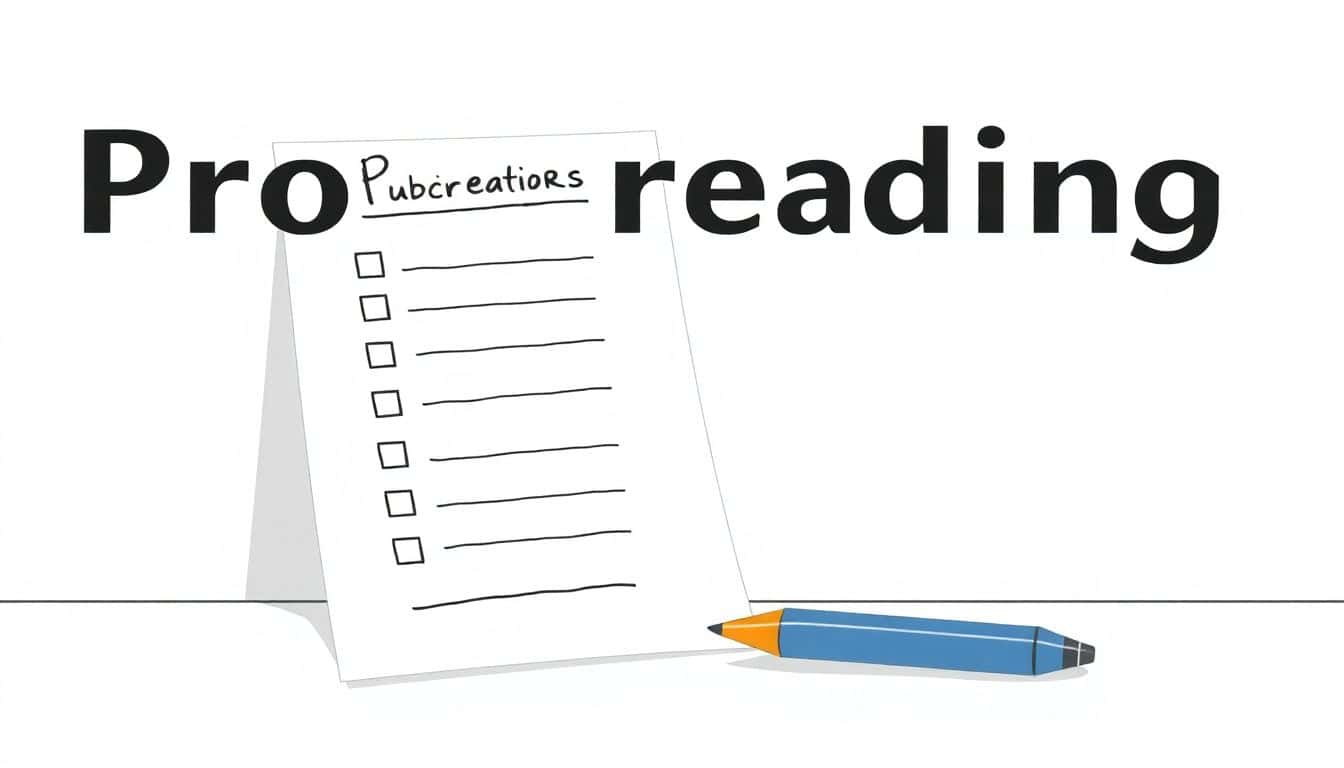Table of Contents
We all want our work to meet publishing standards, but figuring out what’s required can feel overwhelming. From titles to ethical rules, missing a detail might delay our plans or even cause rejection.
Stick with me, and I’ll guide you through simple steps to stay compliant—using checklists, careful proofreading, and making sure all legal boxes are ticked. Keep reading, and you’ll have a clear path to publishing success without the headaches.
In the next bits, I’ll share practical tips to help you follow guidelines smoothly, so you can focus on sharing your ideas confidently.
Key Takeaways
Key Takeaways
- Know the main parts of publishing rules, like catchy titles, correct author details, and proper formatting tailored to each platform to avoid surprises or rejection.
- Follow ethical standards by citing sources properly, avoiding plagiarism, respecting privacy laws, and understanding platform policies to protect your reputation.
- Stay aware of new laws, deadlines, and standards, especially in 2025, to prevent legal issues and keep your work compliant across different regions and systems.
- Get explicit approval from co-authors, cite sources accurately, and use tools to check for originality to prevent disputes and maintain credibility.
- Use checklists to review formatting, metadata, and supplementary files before submitting, reducing errors and increasing your chances of acceptance.
- Verify that your article’s identifiers, like DOIs, and supplementary materials are properly uploaded and linked, for easy citation and transparency.
- Keep up with evolving rules and update your processes regularly, setting reminders and reviewing guidelines to stay compliant over time.

1. Know the Key Elements of Publishing Guidelines
Getting your work published means paying attention to the basics first. This includes crafting clear, catchy titles that grab attention without being clickbaity. Make sure all authors are properly listed, with their affiliations and contributions clearly noted. Formatting standards matter a lot—think consistent font choices, heading structures, and citation styles so your submission looks professional. Don’t forget that each platform or journal may have unique requirements, so always double-check their specific guidelines. For example, some might want abstract summaries upfront, others prefer certain file types like DOCX or PDF. Knowing these details upfront saves you from last-minute surprises—and helps your work stay out of the rejection pile.
2. Comply with Editorial, Ethical, and Platform Standards
Beyond the technical stuff, it’s crucial to follow ethical norms—like ensuring your content is original and properly cited. Avoid plagiarism at all costs; use tools if needed to double-check your work for accidental copying. Respect privacy laws, especially when including data or images of individuals, by securing necessary permissions. Each publishing platform may have their own standards around AI-generated content or controversial topics, so familiarize yourself with their policies. Additionally, adhere to editorial standards like clarity, accuracy, and neutrality to build trust with your audience. Remember, failing to meet these standards can lead to fines, retractions, or damage to your reputation, so take them seriously from the get-go.
3. Know the Latest Regulatory Trends and Compliance Deadlines
Keeping up with new laws is a game-changer for publishers, especially in 2025. For instance, eight new U.S. states—including Delaware and New Jersey—have introduced privacy laws that require data minimization and transparency. Missing these can mean hefty fines or legal headaches. Also, be aware of ISO update deadlines like October 31 for cloud security controls or PCI DSS enforcement by March 31, 2025. These rules are designed to protect user data but also mean publishers need to adjust their processes. GDPR updates for 2025 enhance AI transparency and tighten cross-border data rules, impacting how you handle international content. Staying ahead of these dates and standards helps you avoid costly non-compliance and keeps your publishing operations aligned with legal standards.

4. Stay Updated on Legal and Ethical Standards
Keeping tabs on legal and ethical standards is key to avoiding trouble down the line.
In 2025, privacy laws in states like **Maryland** and **New Jersey** require publishers to limit data collection and ensure transparency, so you’ll want to review your data practices.
Always get explicit approval from all co-authors before submission—nothing kills momentum like a disputed authorship.
Make sure you’re properly citing sources and giving credit where it’s due, especially with images and data, to steer clear of plagiarism issues.
Use plagiarism checkers and AI content detection tools, like **Gable.ai** or [Turnitin](https://turnitin.com/), to double-verify your work’s originality.
If you’re in healthcare publishing, note that **HIPAA** updates mandate using stronger encryption and faster breach notifications—stay compliant to avoid penalties.
And don’t forget, respecting intellectual property rights helps you build trust and maintain credibility in your field.
5. Complete Reporting and Submission Checklists
Before hitting submit, make sure your paperwork is in order.
Many journals and publishers now require detailed reporting checklists that show how you meet their guidelines—think of it as a cheat sheet for your submission.
Double-check that your manuscript aligns with all the formatting, citation, and supplementary file requirements—missing a detail can tip the scales toward rejection.
Use tools or templates provided by the publisher to ensure nothing is overlooked; it’s better to catch issues early than to deal with rejection later.
If you’re dealing with complex data or supplementary materials, ensure they are correctly labeled, formatted, and uploaded with appropriate identifiers like DOIs.
Following the checklist guarantees your submission is as complete and polished as possible, saving you time and frustration later.
6. Manage Identifiers and Auxiliary Files Properly
Getting your article a DOI (Digital Object Identifier) is essential because it ensures your work can be accurately cited and tracked.
Many publishers automatically assign DOIs, but it helps to verify this during submission to avoid missing out on proper attribution.
If you’re submitting supplementary materials such as datasets, images, or videos, make sure they are uploaded correctly with unique identifiers to maintain transparency.
Using tools like **Figshare** or **Zenodo** can help you generate and manage DOIs for your supplementary files, making sharing and referencing easier.
Proper management of these elements enhances the credibility of your publication and facilitates data sharing, which is increasingly valued in research circles.
Always confirm that your supplementary content is accessible and correctly linked in the final submission to avoid confusion or loss of data.
7. Ongoing Compliance and Practice Updates
Staying on top of evolving standards isn’t a one-time task—it’s an ongoing process.
Regularly review changes in publishing guidelines, especially with new laws like the **eight new US state privacy laws** in 2025, which put additional pressure on data handling.
Set up reminders or subscribe to industry newsletters from groups such as [COPE](https://publicationethics.org/) or [Committee on Publication Ethics](https://publicationethics.org/) to keep abreast of their latest updates.
Update your processes accordingly—whether it’s retraining staff on new ethical standards or revising data management practices.
Keep records of your compliance efforts as proof of good practice, especially if you face audits or inquiries.
And remember, compliance is only as good as your last check – make it routine to review standards so your standards don’t slip over time.
FAQs
Include elements like clear titles, accurate author lists, proper formatting standards, and compliance with editorial, ethical, and platform-specific rules to ensure a smooth publication process.
A checklist helps verify that all editorial, SEO, and formatting standards are met, reducing errors and making the publishing process more efficient.
Prepare all materials like cover letters and author agreements, review the manuscript with publisher tools, and promptly check proofs to ensure accuracy before final submission.
Obtaining co-author approvals, checking for IP issues, and including proper citations prevent misconduct and protect the integrity of the publication.



